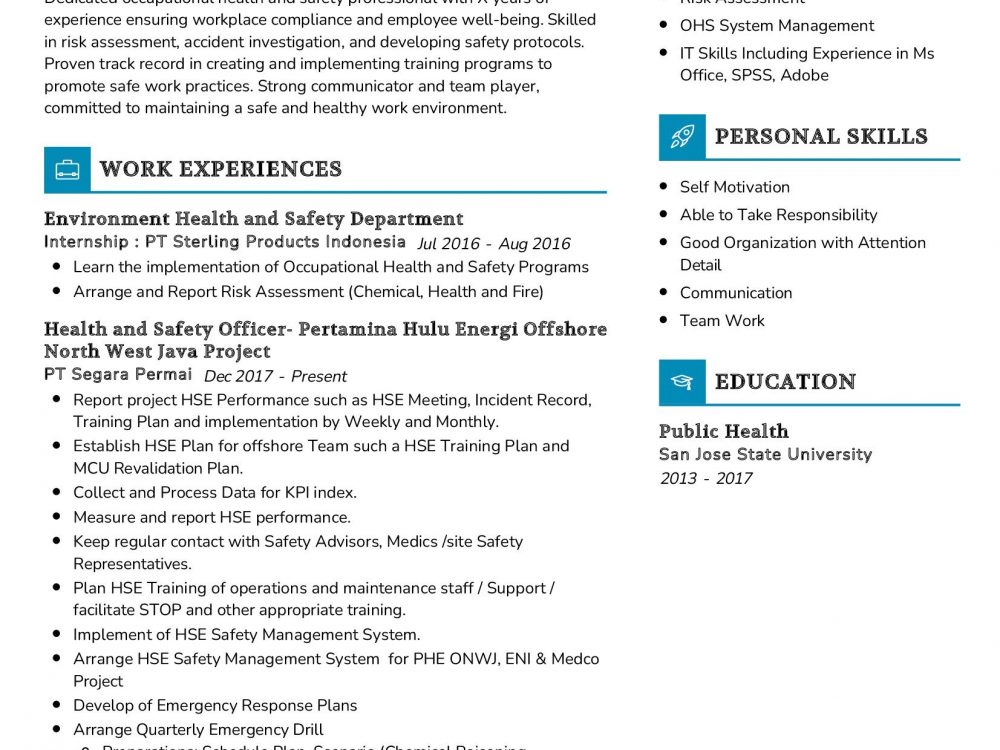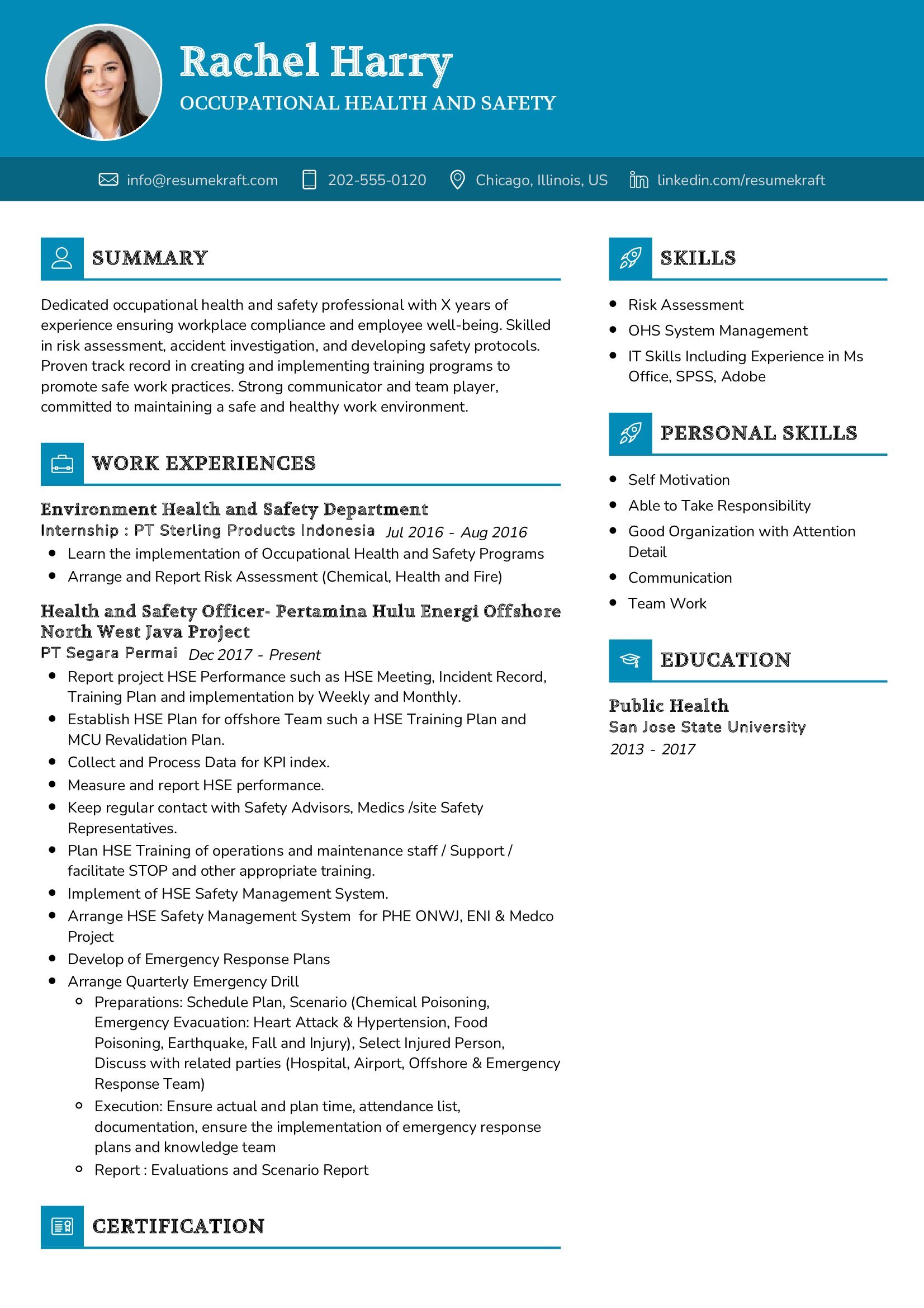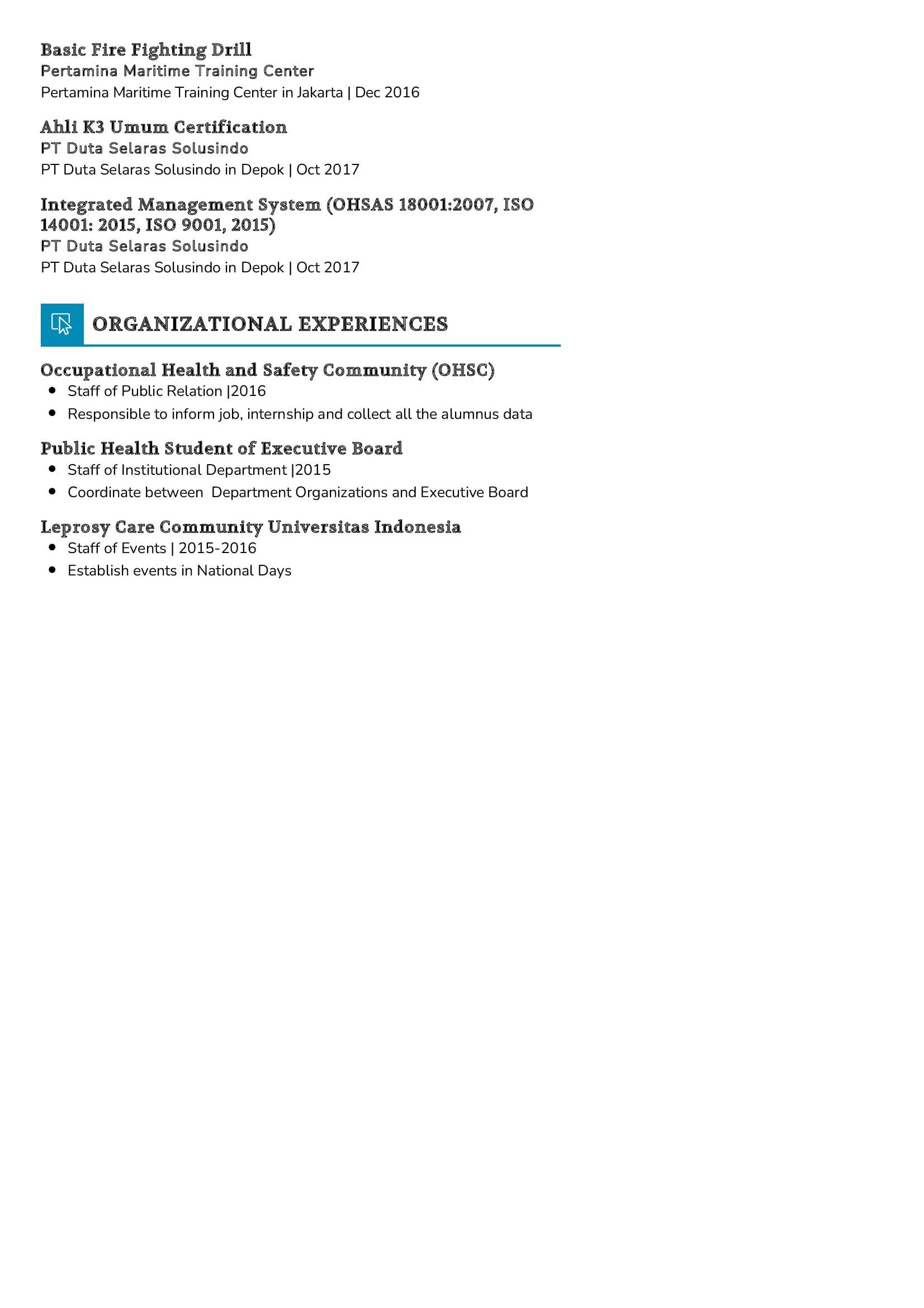Occupational Health & Safety: A Vital Role in the Modern Workplace
As the global workforce continues to evolve, the importance of Occupational Health & Safety (OHS) professionals has never been more pronounced. The role of an Occupational Health & Safety Specialist or Manager is a critical blend of technical expertise and leadership skills, aimed at safeguarding the health and well-being of employees while ensuring compliance with regulations and standards. In this comprehensive guide, we’ll delve deeper into the multifaceted role of an Occupational Health & Safety professional, the job requirements, responsibilities, and tips for crafting an effective OHS resume.
What are the Occupational Health & Safety Job Requirements?
Becoming an Occupational Health & Safety Specialist or Manager is a journey that demands a specific set of qualifications and skills. Let’s explore the prerequisites that one needs to fulfill to excel in this vital role:
- A Bachelor’s or Master’s degree in Occupational Health & Safety, Environmental Health, or a related field, showcasing a strong foundation in the field.
- Profound knowledge of OHS regulations, including OSHA (Occupational Safety and Health Administration) standards and other relevant local and international regulations.
- Experience in conducting risk assessments, workplace inspections, and incident investigations, demonstrating a history of ensuring a safe work environment.
- Strong communication and interpersonal skills, essential for collaborating with employees, management, and regulatory authorities.
- Leadership and managerial skills, honed through experiences and possibly through courses and certifications.
- An understanding of industrial hygiene principles, including exposure assessment and control measures.
- Proficiency in using OHS software and tools for data analysis and reporting.
- Ability to work under pressure, especially during emergency situations or compliance audits.
Securing additional certifications in OHS, such as Certified Safety Professional (CSP) or Certified Industrial Hygienist (CIH), can enhance your profile in the competitive job market.
What are the Responsibilities of an Occupational Health & Safety Professional?
The role of an Occupational Health & Safety Specialist or Manager is a tapestry of diverse responsibilities, each contributing to the overall safety and well-being of employees. Let’s unravel the core responsibilities that define this role:
- Conducting regular workplace inspections to identify and rectify potential hazards, ensuring a safe and healthy work environment.
- Developing and implementing safety policies and procedures, tailored to meet the organization’s needs and comply with regulatory requirements.
- Leading incident investigations, analyzing root causes, and recommending preventive measures to avoid future accidents.
- Collaborating with cross-functional teams to provide OHS expertise during the design and planning of new processes or facilities.
- Conducting training sessions for employees on safety practices, fostering a culture of awareness and continuous learning.
- Ensuring compliance with OSHA and other regulatory standards, safeguarding both employee health and the organization’s reputation.
- Keeping abreast with the latest developments in OHS, including emerging risks and best practices, and implementing necessary changes.
Each responsibility is a vital thread in the fabric of workplace safety, requiring diligence, knowledge, and a commitment to employee well-being.
Occupational Health & Safety Resume Writing Tips
Your resume is your opportunity to showcase your qualifications, experience, and commitment to Occupational Health & Safety. Here are some tips to help you craft an effective OHS resume:
- Highlight your leadership roles, showcasing instances where you have led safety initiatives and achieved improvements in workplace safety.
- Detail specific incidents or safety programs you have managed, emphasizing the impact they had on reducing workplace accidents.
- Include metrics to quantify your achievements, such as a percentage reduction in incidents or an increase in safety compliance rates.
- List relevant OHS certifications and training, demonstrating your commitment to continuous learning and professional development.
- Customize your resume for each job application, tailoring your qualifications to match the specific job requirements.
Remember, your resume is your first impression, so make it count by showcasing your expertise in Occupational Health & Safety.
Occupational Health & Safety Resume Summary Examples
Your resume summary serves as the introduction to your qualifications and experience. Here are some examples to inspire you:
- “Dedicated Occupational Health & Safety Manager with over a decade of experience in developing and implementing safety programs, resulting in a 30% reduction in workplace accidents.”
- “Certified Safety Professional with a proven track record in conducting risk assessments and leading incident investigations, ensuring regulatory compliance and employee well-being.”
- “Experienced Occupational Health & Safety Specialist specializing in industrial hygiene, with a strong commitment to creating a culture of safety and continuous improvement.”
Your resume summary should succinctly capture your expertise and the value you bring to an organization’s safety efforts.
Create a Strong Experience Section for Your Occupational Health & Safety Resume
Your experience section is where you narrate your career story in more detail. Here are some examples to guide you:
- “Led a team of OHS professionals in a manufacturing setting, implementing safety measures that resulted in a 25% decrease in workplace accidents over two years.”
- “Managed the company’s safety program, ensuring compliance with OSHA regulations and reducing recordable incidents by 15% through proactive safety measures.”
- “Conducted extensive safety training for employees in high-risk environments, resulting in a 40% reduction in incidents and injuries.”
Your experience section should demonstrate your practical application of OHS principles and your ability to drive positive outcomes in workplace safety.
Sample Education Section for Your Occupational Health & Safety Resume
Your educational background is the foundation of your OHS career. Here’s how you can list your educational milestones:
- Master of Science in Occupational Health & Safety, XYZ University, a comprehensive program focusing on safety management and risk assessment, 2018.
- Bachelor of Science in Environmental Health, ABC University, providing a solid foundation in OHS principles and regulations, 2012.
- Certified Safety Professional (CSP), a prestigious certification demonstrating expertise in OHS, awarded in 2019.
Your education section should highlight your academic qualifications and any relevant certifications that enhance your OHS expertise.
Occupational Health & Safety Skills for Your Resume
Your skill set is your toolkit, equipped with a diverse range of skills honed over the years. Let’s list the essential skills for an Occupational Health & Safety professional:
Soft Skills:
- Leadership and team management, essential for leading safety initiatives and fostering a culture of safety.
- Effective communication and interpersonal skills, vital for conveying safety information and building strong relationships with employees and management.
- Problem-solving abilities, critical for identifying and mitigating safety risks.
- Attention to detail, ensuring thorough inspections and accurate documentation of safety data.
- Adaptability and resilience, crucial for responding to changing safety requirements and emergency situations.
Hard Skills:
- Risk assessment and hazard analysis, foundational skills for identifying and mitigating workplace risks.
- Incident investigation and root cause analysis, essential for preventing recurring safety incidents.
- Regulatory compliance, knowledge of OSHA and other relevant regulations to ensure legal and ethical safety practices.
- Industrial hygiene principles, including exposure assessment and control measures.
- Data analysis and reporting, proficiency in using OHS software and tools for informed decision-making.
Each skill is a valuable asset in your role as an Occupational Health & Safety professional, contributing to employee safety and well-being.
Common Mistakes to Avoid When Writing an Occupational Health & Safety Resume
As you craft your resume, it’s crucial to avoid common pitfalls that can hinder your chances of landing your desired OHS job. Here are some mistakes to steer clear of:
- Using a generic resume for all applications, instead of tailoring it to match the specific job requirements.
- Focusing solely on job duties without highlighting your achievements and the impact you’ve had on workplace safety.
- Ignoring the importance of a cover letter, which provides an opportunity to further express your commitment to OHS and your fit for the role.
- Overloading your resume with technical jargon that may be unfamiliar to non-technical readers.
- Failing to proofread your resume for errors, which can negatively affect your professional image.
Avoiding these mistakes will help you create a resume that effectively communicates your qualifications and passion for Occupational Health & Safety.
Key Takeaways for Your Occupational Health & Safety Resume
As we conclude this comprehensive guide, let’s summarize the key points to keep in mind when crafting your Occupational Health & Safety resume:
- Showcase your leadership and practical experience in improving workplace safety.
- Highlight your technical proficiency and commitment to ongoing professional development.
- Detail the impact of your safety initiatives and how they contributed to a safer work environment.
- Include relevant certifications and tailor your resume to match the specific job you’re applying for.
Your resume is your opportunity to stand out as a safety leader in the competitive field of Occupational Health & Safety. Make it compelling, informative, and a true reflection of your dedication to keeping employees safe.
Finally, feel free to utilize resources like AI Resume Builder, Resume Design, Resume Samples, Resume Examples, Resume Skills, Resume Help, Resume Synonyms, and Job Responsibilities to create a standout application and prepare for the Occupational Health & Safety job interview.



